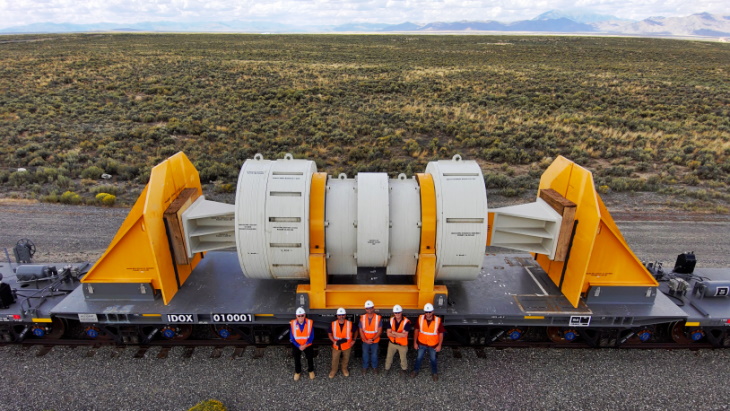
The 12-axle railcar comes fully equipped with high-tech sensors and monitoring systems. It was designed to safely and securely transport shipments of commercial used nuclear fuel weighing up to 480,000 pounds (218 tonnes). DOE said the railcar project took ten years to complete and cost about USD33 million.
It noted the certification was the highest safety standard set by the AAR for transporting high-level radioactive material.
The entire railcar system includes the Atlas railcar, two buffer railcars and a rail escort vehicle that was developed in partnership with the Naval Nuclear Propulsion Program.
Final testing of the railcars was marked by the completion of a 1680-mile round-trip journey from Pueblo, Colorado, to Scoville, Idaho. They are the first DOE railcars to meet the rigorous testing requirements of AAR's S-2043 standard for transporting high-level radioactive material.
"The certification of the Atlas railcar by the AAR is a significant step forward as we develop the infrastructure to safely manage and store the nation's nuclear waste," said DOE Deputy Assistant Secretary for Spent Fuel and High-Level Waste Disposition Paul Murray. "The capability for DOE to safely and securely transport spent nuclear fuel is a key component of DOE's vision for an integrated waste management system that includes transportation, and government-owned storage and permanent disposal identified through a consent-based siting process."
Atlas is one of two railcars DOE is developing to provide flexibility in transporting used nuclear fuel and high-level radioactive waste to future federal interim storage facilities and disposal sites.
The eight-axle Fortis railcar - designed to carry lighter loads - is expected to begin single car testing no earlier than 2025 and could be operational before the end of the decade.
The management of civilian used nuclear fuel in the USA is a federal responsibility, but the planned permanent repository at Yucca Mountain in Nevada, which in 1987 was designated as the sole initial repository for 70,000 tonnes of high-level wastes, has not been built. This means used fuel from more than 70 shutdown, decommissioned and operating nuclear energy facilities is currently in storage at sites across the nation.
Subject to appropriations, DOE is moving forward on a government-owned consolidated interim storage facility project that includes rail transportation. Commercial used nuclear fuel is packaged in containers weighing between 80 and 210 tonnes, which is beyond legal weight limits for truck transport in the USA. Rail is therefore the preferred mode to move these containers.
DOE intends to eventually transport more than 140,000 tonnes of commercial used nuclear fuel that it is estimated will have been generated in the USA by 2060.
The location of the consolidated interim storage facility would be selected through DOE's consent-based siting process that puts communities at the forefront and would ultimately reduce the number of locations where commercial used nuclear fuel is stored in the USA.
Construction and operation of the storage facility will require amendments to the Nuclear Waste Policy Act to move those phases of the project forward.